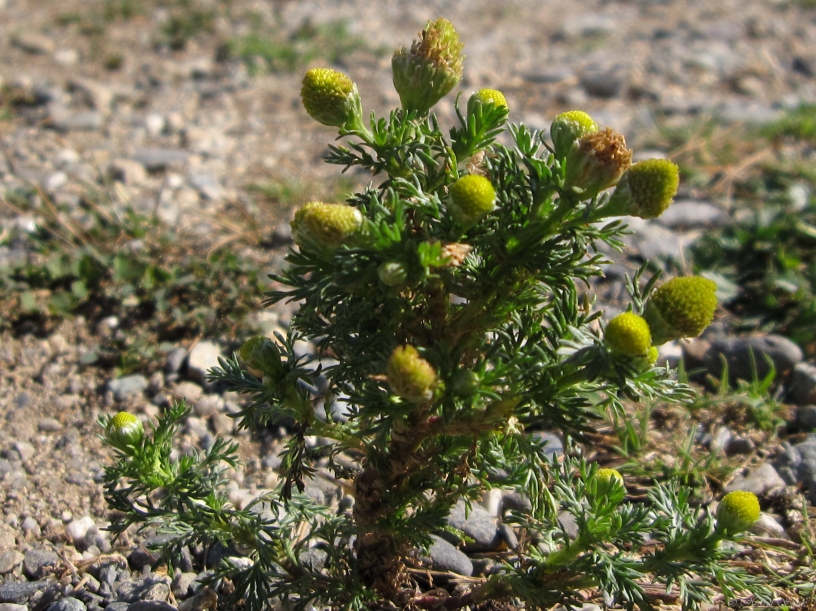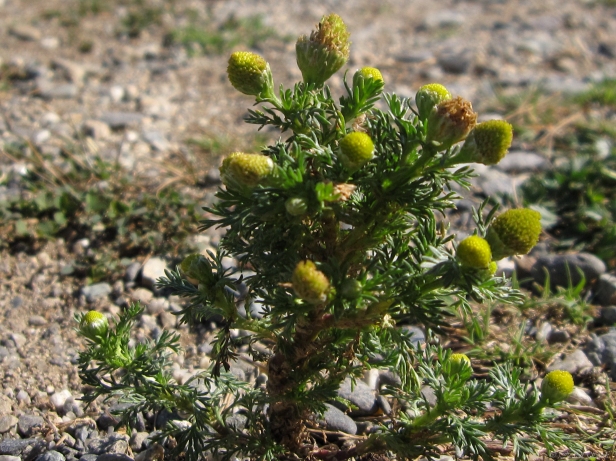Pineapple Weed, Matricaria discoidea
Family: Asteraceae, the Aster Family
Description: Non-native annual herb. Exudes a pineapple odor when crushed, flowers made up of tiny disc florets, leaves finely dissected into fern-like combs, resembles chamomile (same genus)
Abundance: Common
Habitat: Disturbed sites, roadsides, parking lots, sidewalks, driveways
Plant Parts Used: Leaves, flowers
Food: Tea
Medicine: Soothing, relaxing, menstrual problems
Pineapple weed can be an unintimidating introduction to wild edible plants. This small plant grows nearly everywhere, is very easy to identify, and has a distinguishing pineapple smell when crushed. Pineapple weed can be used as a substitute for its close relative, chamomile (Matricaria recutita). The leaves and flowers dried for tea creates a casual, yet very soothing and relaxing tea. John also said it has been used for menstrual problems. The indigenous people of Montana have treated the menstrual cramps of young girls with pineapple weed. It has also been used by a variety of Native American tribes as a gastrointestinal aid, especially for stomach pain related to gastrointestinal problems.
Caution: Pineapple weed and chamomile contain some of the same compounds. People who have an allergy to chamomile should not consume pineapple weed.
Note: This post is part of my Plants and People series. See my Plants and People page for more information about the project and the people referenced in this post.
References:
- Brooks, John. Personal Interview. 28 Nov. 2010.
- Michener, Martin C. Botany Everywhere: Woods, Field, Home, and Garden Plants of NE USA, Third Edition. Hollis, NH: MIST Software Associates, Inc., 2009. PDF.
- Mittelhauser, Glen H., Linda L. Gregory, Sally C. Rooney, and Jill E. Weber. The Plants of Acadia National Park. Orono, Me.: University of Maine, 2010. Print.
- Moerman, Daniel E. Native American Medicinal Plants: an Ethnobotanical Dictionary. Portland, Or.: Timber, 2009. Print.
- Reitze, Raymond and Nancy. Personal interview. 8, 15 Oct. 2010.
- Szwed, Sue. Personal interview. 12 Nov. 2010.
- Turner, Nancy. “Re: Request for a Foreword.” Message to the author. 4 May 2011. E-mail



It makes a nice, richly aromatic tea. And as you said, it grows everywhere!
I think we have that. I will have to smell it next spring. Thanks Hazel